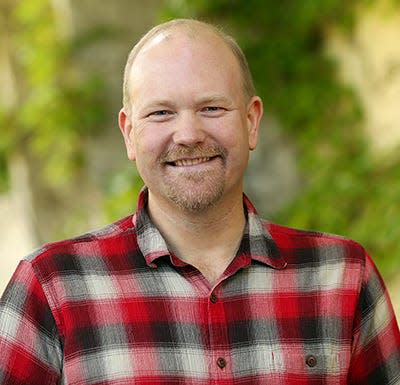Derek Larson: America's happiness divide
How happy are we? The Gallup organization and the United Nations recently released their annual World Happiness Report, and the results are mixed. Globally “inequality of happiness” has increased 20% in just over a decade, illustrating a growing gap between countries and among sub-populations. The United States actually fell off the list of the top 20 happiest countries this year, dropping to 23 from 15 in the last survey. Much of that decline, according to the report, is due to rising unhappiness among younger Americans. This trend — declining happiness among youth — is particularly evident in the US, which raises many questions about the future of our society.
In most of the world, the report found, young people reported greater happiness than older ones. This was true across Europe, for example. Finland remains at the top of the list of happiest countries, followed in close order mostly by other Scandinavian countries, a few small western European nations like Luxembourg, and Israel. At the very bottom was, once again, Afghanistan. Rankings were based on self-reported “life evaluations” made by individuals using a 1-10 scale ranging from “worst possible” to “best possible” life.

The happiness age division in the US is particularly striking: we actually ranked 10th for persons over 60, but 62nd for those under 30. Some researchers attribute this to a sense of social disconnection produced by the pandemic, and especially its impacts on younger people who were cut off from routine social practices during critical developmental years. Though the report notes that “globally, young people aged 15-24 still report higher life satisfaction than older adults” that is no longer true for the US. On the whole, positive emotions (laughter, enjoyment, and interest) have remained fairly steady in most regions, so the decrease in happiness is largely attributable to people experiencing negative emotions (worry, sadness, and anger) more frequently. For the US, the least happy segment of the population was found to be the “lower middle,” or the 30-44 age range.
Social isolation, or loneliness, seems a likely driver of unhappiness in America. The report found that self-reported loneliness here was “twice as high among Millennials as among those born before 1965.” Again, this differs from much of the rest of the world; in Europe, Latin America, and Sub-Saharan Africa the oldest were the least happy, not the young. In the Middle East, North Africa, and Latin America the “upper middle” group were also on the lower end of the happiness scale. Only North America and Australia/New Zealand revealed the pattern of lower happiness ratings largely among the adolescent and young adult groups, with the oldest respondents reporting significantly higher overall happiness.
So what does this mean? It’s not easy to extrapolate trends from population-level surveys on a global basis to inform any particular response. But the contrast between the North American results this year and the rest of the world, and the marked downward trend in happiness among younger Americans in particular, bear further examination. As growing income inequality, restrictions on personal freedoms, political division, cultural conflicts, and economic uncertainty all mount, it makes sense that young adults would feel the impacts the most. Older people with more established careers, robust social networks, and settled patterns of living would presumably be more insulated from these challenges than are young adults just trying to get a start in life, seeking out education, beginning careers and families, and in many cases wondering if they are being shut out of the “American dream” of family, career, home ownership, and opportunity by forces beyond their control.
As in past reports, studies of happiness typically point to social networks and support — or the lack thereof — as vital to overall personal happiness. Those are declining in America, especially among younger people for whom the COVID pandemic was a disruptive force in education or home life, and perhaps for those for whom social media has supplanted face-to-face interaction as well. So part of the solution to our happiness problem is probably just finding ways to re-establish frayed social networks and supporting one another in the ongoing pursuit of laughter, enjoyment, and interest.
— This is the opinion of Times Writers Group member Derek Larson. He teaches history and environmental studies at The College of St. Benedict and St. John’s University. His column is published the first Sunday of the month. He welcomes your comments at [email protected].
This article originally appeared on St. Cloud Times: Derek Larson: America's happiness divide